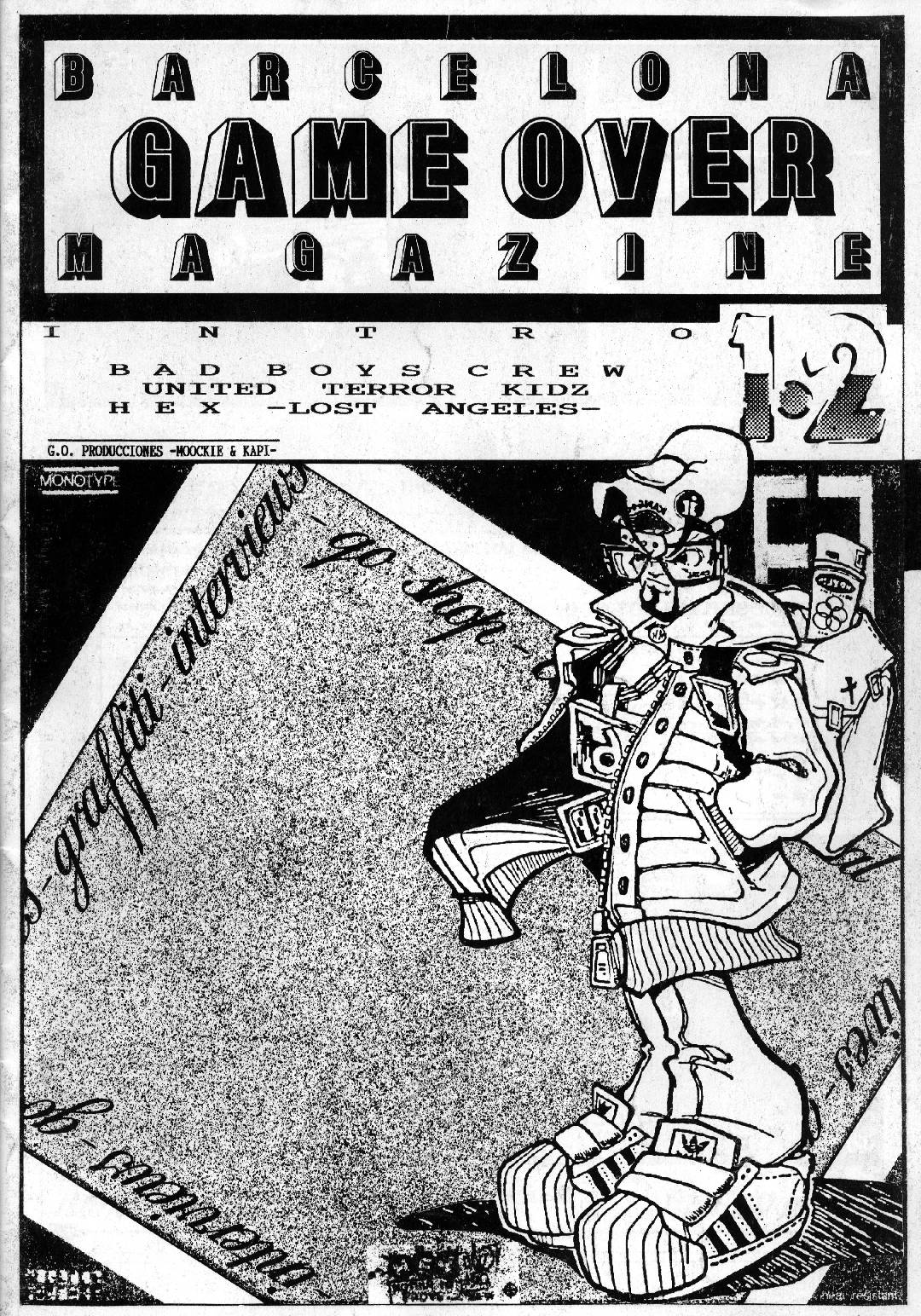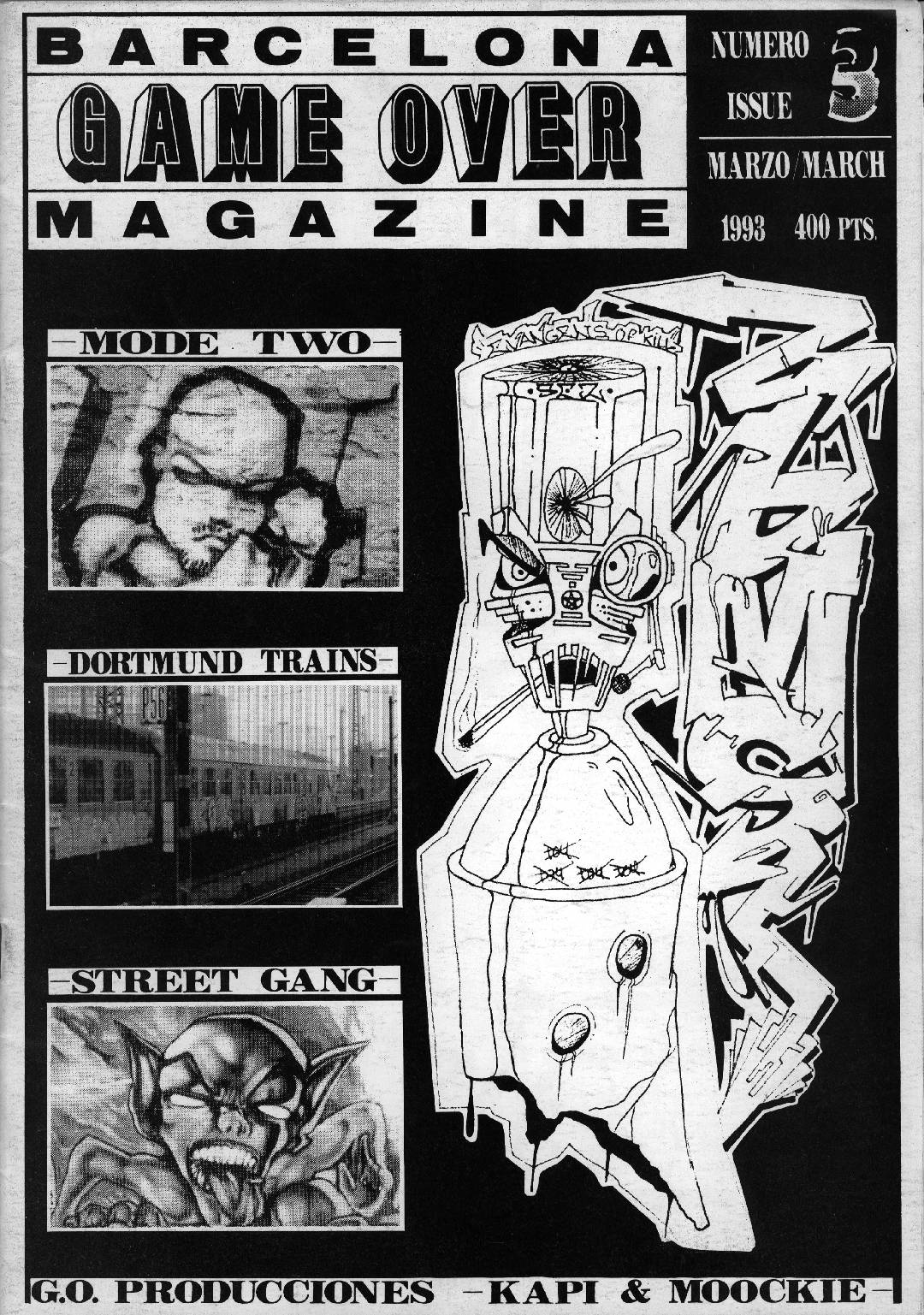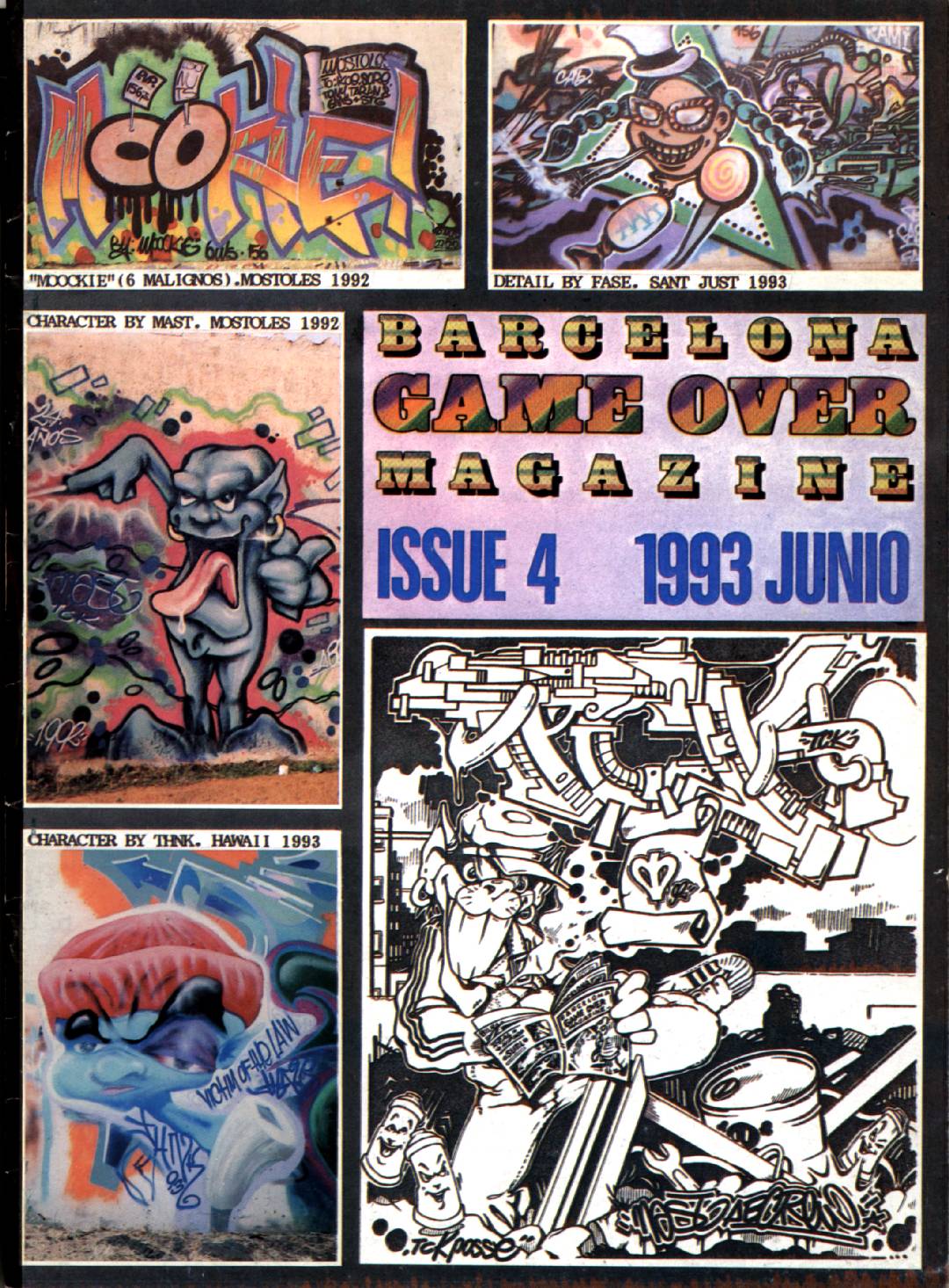- About MTN
Would you like to stay up to date on the latest MTN world news? Products, graffiti, murals, festivals, art and much more.
Return We Were There - I: How it all began: Graffiti magazines
Not many people know this, but it was the early graffiti magazines that led to the birth of a paint brand specially designed for writers.
Finding advertisers to fund independent publications was the revolutionary idea that brought writers into contact with the world of industrial painting. This is how Kapi, Moockie and Jordi Rubio met.
THE BOOM OF FANZINES, THE JOURNALS OF GRAFFITI
“If you made photocopies and stapled them, you called it fanzine. If it was printed by a "superior" machine, folded and stapled in the center like magazines, you called it magazine."
Between 1987 and 1992 there was an explosion of homemade publications in the Barcelona graffiti scene. Photocopied pamphlets, typewritten edicts and a declaration of intentions that made up the fanzines. Every self-respecting crew published something, on at least one occasion. They were pioneering times and ingenuity was the final resource to create the perfect publication. Aerosol, Megablast, WYN, Aerovicio. Sutil began to integrate color copies of photos in his famous CFC publication, which also used raster treatment so that the details were not lost. Moockie made ETN (“Escribe Tu Nombre” - Write Your Name), a direct descendant of WYN (Write Your Name) that he also produced with his crew.

MAGAZINES AS THE MEANS OF COMMUNICATION AND DISSEMINATION
All the editors of the magazines had a story and experiences that led them to push their projects forward, evolve or give up. Moockie met Kapi and they began a massive exchange of photographic information. Images collected from his early travels through Europe added to photos collected through the tradition of graffiti writers trading letters with their new international contacts and friends. A frenzied exchange between nations resulted in the emergence of this wild guerrilla journalism.
Moockie and Kapi each owned collections of photos and schemed together to work out how to share the material with the rest of the planet. Or, at least to their small world that the city of Barcelona represented in the year of the Barcelona Olympics.
THE FIRST SERIOUS NATIONAL HIP HOP MAGAZINE IS BORN: GAME OVER
"If people had more and better information, the graffiti scene would be healthier and stronger."
Based on the common goal shared by the two companions of nocturnal adventures, now with inspiration in their hands - the Swiss magazine 14K Magazine, which although mostly black and white, was professionally printed and looked more slick than others - they decided to start a new project. This is how BGOM (Barcelona Game Over Magazine) was born, leaving ETN to die.
After the Olympic hangover and at the end the summer of 1992, the first issue of BGOM was printed with the OFFSET technique, a kind of sophisticated photocopying). 200 copies were produced of a polished hip-hop magazine, mainly consisting of graffiti, for the first time in Spain.

AN AMBITIOUS STRATEGY: LOOKING FOR ADVERTISERS
“I first met Moockie and Kapi in front of the gardening store wheere Mookie used to work. I wanted to listen and learn, and they wanted to fill me in and make moves. I was 27, they were 22. There on the noisy Via Laietana in Barcelona, it was a pre-Tinder match: the prologue of what has become a very long story.” Jordi Rubio.
The next two issues were published in 1993 and contained an “innovative” funding strategy. The editors saw the need to get money from big brands, not just advertise local stores or friends’ projects that provided little support. Overcoming various obstacles, in that same year, Moockie and Kapi managed to get the attention of Jordi Rubio, who worked for Felton, the Barcelona spray paint brand. A brand which, together with Spray Color (Tecnova) and Novelty, were the most popular due to their distribution and their low cost compared to other imported brands. The conversation with Jordi went better than expected: he was fascinated with the proposal and especially with the enthusiasm of these two fans of street paintings. He didn’t hesitate to accept an advertisement proposal and thanks to this funding, BGOM number 4 was the first magazine with color pages to be published in our small universe of national graffiti.
That conversation between Moockie, Kapi and Jordi would one day result in much more - but that’s another story.
 ShareNovember 05, 2020
ShareNovember 05, 2020
